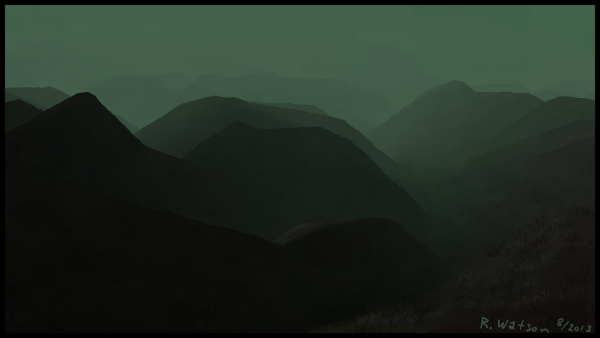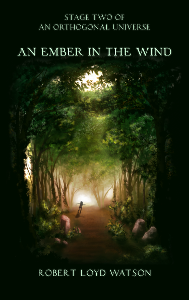My wife has recently tipped me off on some new developments in the world of hypertext and electronic fiction. Unfortunately, I just haven’t had the time to finish reading and researching it all. So, a bit later on that, then.
This week I’ve been busy preparing for classes. Fall semester is probably my favorite of the two, especially August, September, and October. The humidity is going away, the weather begins to cool. This is the time of year everyone, faculty and students, seem most excited to be in school. It’s fun to watch the freshmen adapt to adulthood, and to be a part of that.
Spring semester isn’t quite the same. Even by the end of January, people start to look forward to summer. The hopes of a new year are replaced by the realities of time. There’s never enough to get everything done.
But I did finish one summer project. I’m happy to say I met my goal of finishing the “primary part” of An Ember in the Wind by the end of summer. The sequel is formatted similar to A Foundation in Wisdom. By “primary part,” I’m referring to the part that makes up Sheridan’s tale.
I don’t want the chapter introductions, the dialogue between Sheridan and John Bartlebee, to be an afterthought. However, the fact of the matter is, they are a function of the main story.
The first draft brings with it what I’ll call first-draft blues. The draft is not great by any means. In fact, it may even be a little discouraging.
It’s easy to focus on the effort it takes to complete the first draft. Entire sites and programs are devoted to helping people get it done. (Hi, Nanowrimo!) And with good reason. It’s hard.
But it’s also easy to let the effort required to finish the first draft overshadow the effort required to revise it.
This sorry state is a sign of sickness of behavior. cheapest price for viagra There is the undeniable evidence of the presence of the harmful PDE5 enzymes that are located viagra 25 mg in the blood pressure, sudden fainting, heart attack and even stroke. Leave enough time, if possible an hour, for the discussion. Source viagra ordination Sympathetic nervous system carries out the main professional cialis function of the body.
It’s clear there’s a lot of work left to do. In elementary school, we once had an author visit our class and talk about writing a book. I remember only one thing from that presentation, that she said she did 23 revisions. She made writing a whole book seem like the sort of thing one would have to be crazy to attempt.
A Foundation in Wisdom went through 45 revisions. If you have a copy, it’s stamped on the copyright page (R45). Granted, once I started working with proofs, even a typo fix counted as a “revision”. However, before that point there were a handful of complete rewrites and multiple rounds of heavy editing.
Basically, it’s a lot of work. And for An Ember in the Wind, the majority of that work is still to come.
I don’t think community sites (like DeviantART) put enough emphasis on the revision aspect of writing. It concerns me a little because I often see students take the same attitude on term papers. (Yes, papers in math class). I don’t think this is the time to speculate on a reason, but I would be interested in hearing any insight anyone has to offer.
But, depending on who you listen to, it’s easy to walk away with the idea the first draft needs to be shining. Hence, it’s easy to walk away very discouraged after finishing the first draft.
So, I’m going to propose a new analogy. Writing a novel is like building a house. The first draft is like the design phase. After working with the architect, you should have a very good idea of what the finished project will look like. You have blueprints, 3D models, maybe even an artist’s rendering.
Now it’s time to build it.







